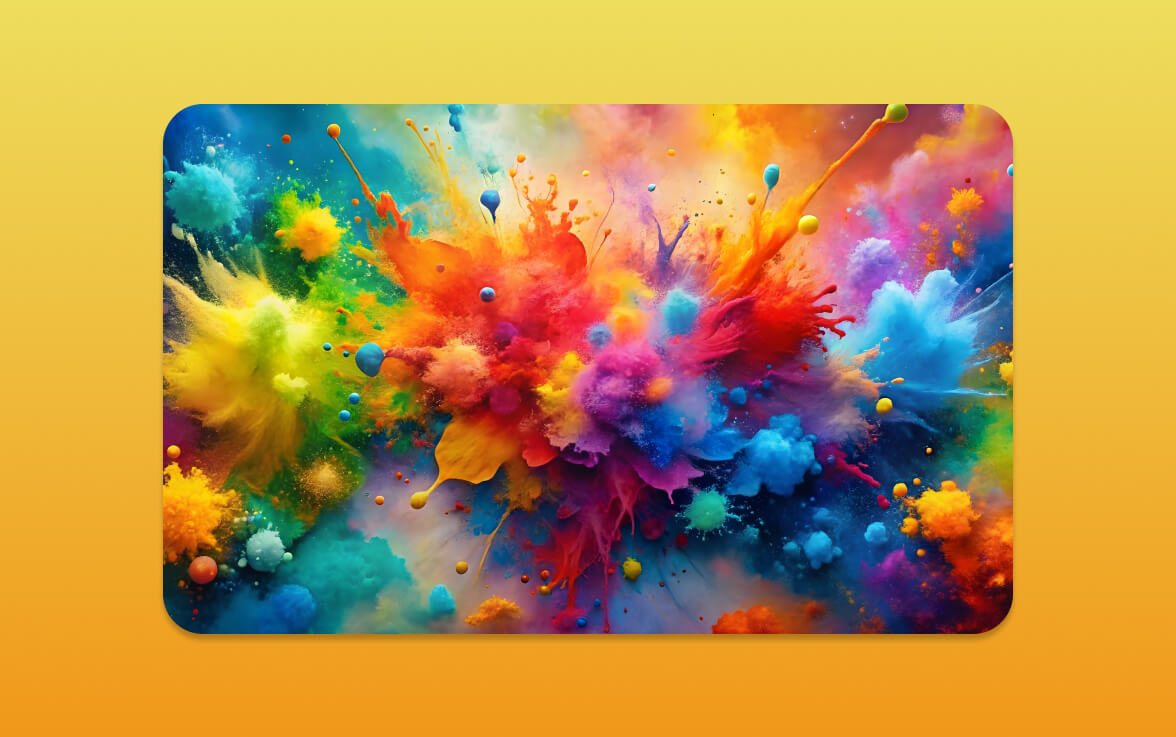Colour is one of the most powerful tools in branding and marketing. It influences emotions, perceptions, and consumer behaviour, often on a subconscious level. Companies strategically use colours to evoke specific feelings and create strong brand identities. Understanding the psychology of colours can help businesses make informed decisions to strengthen their marketing efforts and connect with their target audience effectively.
The Impact of Colour on Consumer Psychology
Colour psychology is the study of how colours affect human behaviour. Different colours evoke different emotions and associations, which can influence how consumers perceive a brand. For example, red is often associated with excitement, passion, and urgency, while blue conveys trust, security, and calmness.
A study by the Institute for Colour Research found that people make a subconscious judgment about a product within 90 seconds of viewing it, and up to 90% of that assessment is based on colour alone. This highlights the crucial role colour plays in marketing and branding.
Moreover, colours can influence purchasing decisions. Bright and warm colours often create a sense of urgency, leading consumers to act quickly, while cooler tones can create a sense of trust and reliability. This is why many financial and healthcare brands opt for blues and greens, while fast-food chains frequently use reds and yellows.
Colours and Their Psychological Associations
1. Red: Energy, Passion, and Urgency
Red is a bold and attention-grabbing colour that stimulates excitement and urgency. It is often used in sales promotions, clearance sales, and call-to-action buttons. Brands like Coca-Cola, YouTube, and Netflix use red to convey energy and passion. Red can also increase appetite, making it a popular choice in the food industry.
2. Blue: Trust, Security, and Professionalism
Blue is commonly associated with stability, trust, and reliability. It is frequently used by financial institutions, healthcare companies, and tech firms. Brands like Facebook, PayPal, and IBM use blue to establish a sense of trust and dependability. Studies have shown that blue can have a calming effect, which is why it is often used in environments where focus and concentration are required.
3. Yellow: Optimism, Happiness, and Attention-Grabbing
Yellow evokes feelings of warmth, optimism, and friendliness. It is often used to capture attention and create a sense of cheerfulness. Companies like McDonald’s, Snapchat, and Ikea use yellow to radiate positivity. However, excessive use of yellow can sometimes lead to feelings of anxiety, so it is often best used as an accent colour.
4. Green: Health, Growth, and Nature
Green is linked to nature, health, and sustainability. It is often used by organic brands, eco-friendly products, and financial services. Brands like Starbucks, Whole Foods, and Animal Planet incorporate green to represent growth and harmony. Green is also associated with wealth and prosperity, making it a strong choice for investment firms and financial institutions.
5. Orange: Creativity, Enthusiasm, and Confidence
Orange combines the energy of red with the warmth of yellow, symbolizing enthusiasm, creativity, and confidence. Brands like Fanta, Harley-Davidson, and Nickelodeon use orange to exude fun and excitement. Orange is often used in call-to-action buttons because it encourages immediate engagement and positive decision-making.
6. Purple: Luxury, Wisdom, and Royalty
Purple has long been associated with luxury, wisdom, and creativity. It is commonly used by brands that want to convey a sense of exclusivity. Companies like Cadbury, Hallmark, and Yahoo use purple to express sophistication and imagination. Purple has also been linked to spirituality and is often used in industries related to wellness and self-improvement.
7. Black: Elegance, Power, and Sophistication
Black signifies luxury, elegance, and authority. High-end brands like Chanel, Nike, and Rolex use black to project sophistication and exclusivity. While black can evoke strength and power, it should be used carefully in branding to avoid appearing too heavy or intimidating.
8. White: Simplicity, Purity, and Cleanliness
White is associated with simplicity, minimalism, and cleanliness. It is often used in healthcare, tech, and lifestyle brands. Apple, Adidas, and Tesla use white to emphasize modernity and simplicity. White space in design can create a sense of openness and clarity, improving the user experience in marketing materials.
9. Brown: Reliability, Earthiness, and Warmth
Brown is often linked to nature, reliability, and comfort. It is used by brands that want to appear grounded and trustworthy, such as UPS, Hershey’s, and Timberland. Brown is a great colour for brands that focus on organic, handmade, or durable products.
How to Choose the Right Colour for Your Brand
Choosing the right colour for branding and marketing depends on several factors, including the brand’s values, target audience, and industry. Here are some key considerations:
- Know Your Brand Identity: Define what your brand stands for and select a colour that aligns with its message.
- Understand Your Audience: Different demographics respond to colours in various ways. For example, younger audiences may prefer vibrant colours, while older consumers may lean towards muted tones.
- Consider Cultural Differences: Colours have different meanings in various cultures. For instance, white symbolizes purity in Western cultures but is associated with mourning in some Asian countries.
- Use Colour Combinations Wisely: Complementary colours can create contrast and draw attention, while analogous colours offer harmony and balance.
- Maintain Consistency: Using a consistent colour scheme across all marketing channels strengthens brand recognition and builds trust.
The Role of Colour in Digital Marketing
In digital marketing, colours play an essential role in user experience, website design, and call-to-action elements. Research suggests that the right colour choices can increase brand recognition by up to 80% and improve engagement rates.
- Website Design: The choice of colour affects user interaction and conversion rates. High-contrast colour schemes can improve readability and lead users toward desired actions.
- Social Media: Brands use vibrant and eye-catching colours to stand out in crowded feeds. Colour psychology is a crucial factor in designing social media graphics and advertisements.
- Advertising: Colours can influence ad performance by attracting attention and conveying emotions that align with campaign goals.
Conclusion
The psychology of colours plays a vital role in branding and marketing. By strategically using colours, businesses can shape perceptions, influence consumer behaviour, and create a strong emotional connection with their audience. Whether you are launching a new brand or rebranding an existing one, understanding colour psychology can help you make impactful marketing decisions that drive engagement and success.
By carefully selecting the right colours and using them effectively across branding materials, businesses can strengthen their visual identity, enhance consumer trust, and ultimately improve their overall marketing performance.

